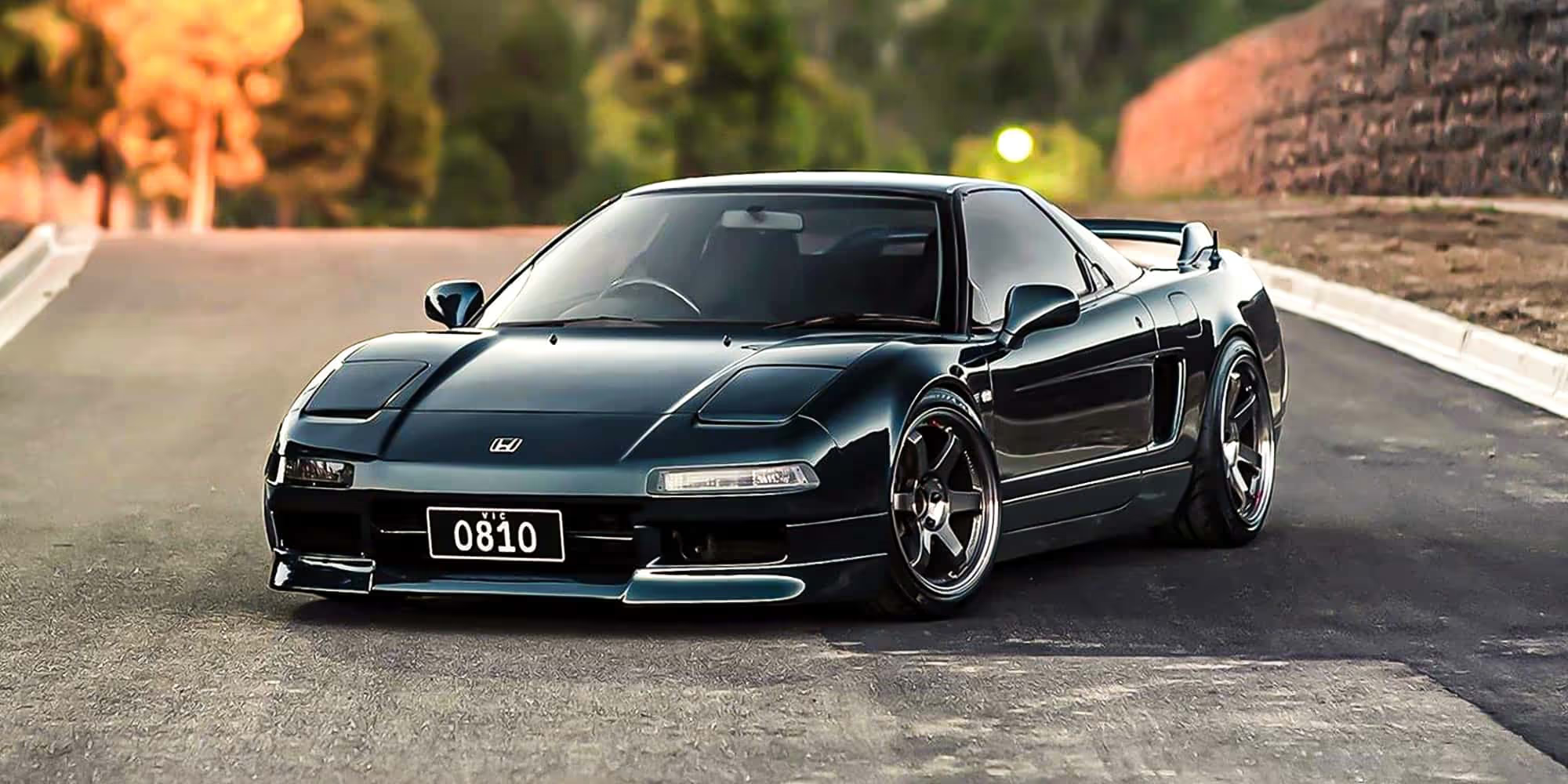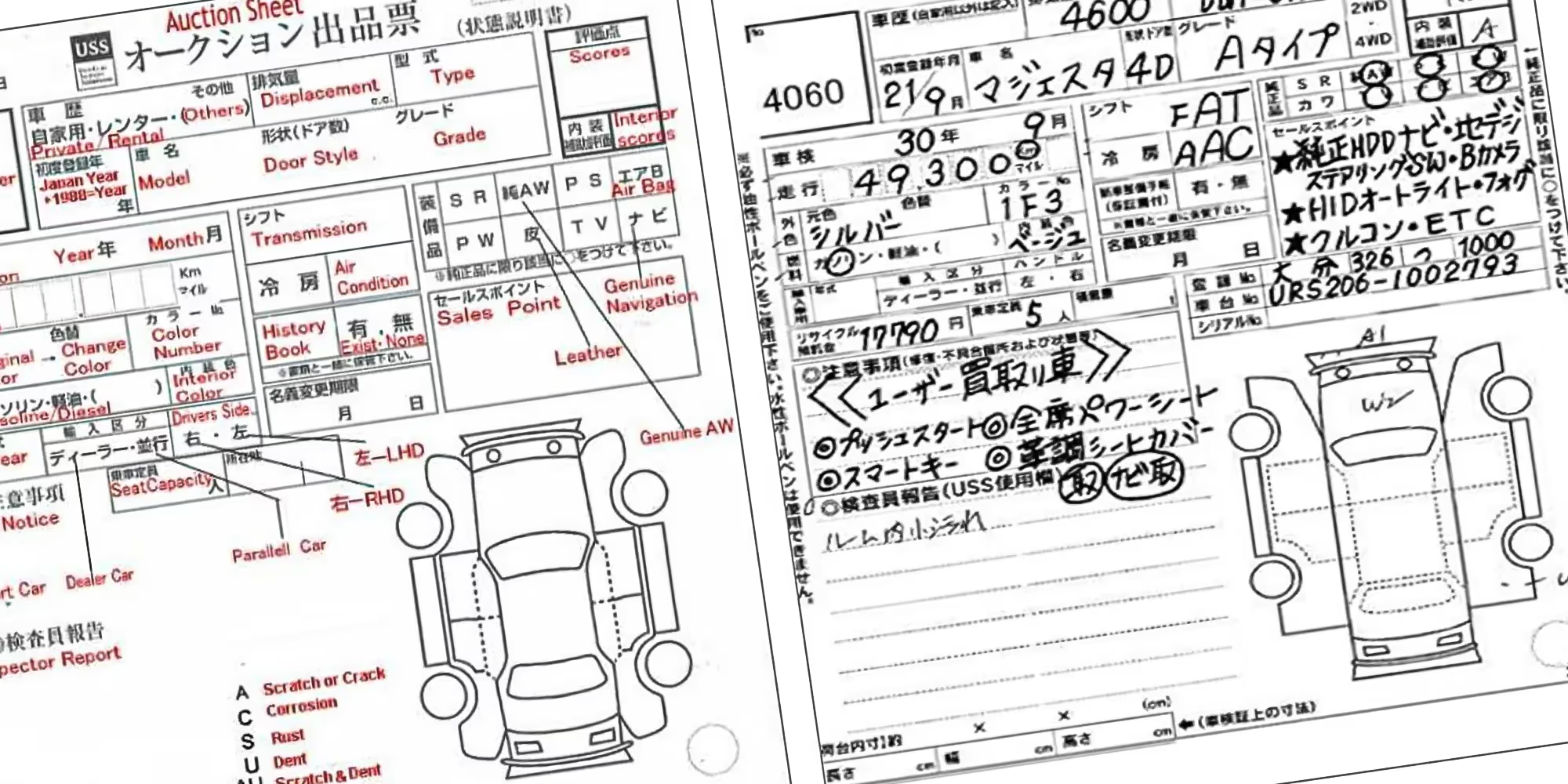Iconic cars from Japan — do you know them?
Although the most frequently imported cars from Japan are those produced by European brands, it is worth knowing that the Japanese have been producing their sports cars for decades, which are the object of sighs of car enthusiasts from all over the world. What are the iconic Japanese cars that have permanently entered the pages of automotive history?
Table of contents
- Honda NSX
- Nissan Skyline GT-R R34
- Mitsubishi Lancer Evolution
- Subaru Impreza
- Toyota Supra
- Nissan GT-R
- Toyota Corolla AE86
- Mazda MX-5
- Honda Civic Type-R EK9
- Lexus LS
- summary
In the 80s and 90s of the 20th century, and even at the beginning of the 21st century, Japanese car brands had in their offers many car models that have gained cult status. This is not only about the famous Japanese reliability, but above all about their extraordinary appearance, above-average performance and innovative technologies combined with the fact that they were hardly available in the United States and Europe. Precisely because Classic cars from Japan are highly appreciated by car enthusiasts from all over the world.
Although the production version of the first generation Honda NSX appeared in 1990, work on the car began as early as 1984, with the goal of building a car with engine performance superior to Ferrari's V8. The car, designed in collaboration with Pininfarina, later served as inspiration for the design of the McLaren F1.
The Honda NSX was the world's first car with an all-aluminum body. Under the hood, a 3-liter V6 engine with a VTEC variable-phase timing system operates. The engine generated a maximum power of 276 hp at a weight of 1365 kg with liquids and fuel. In 1992-1995, the NSX-R version was produced, the weight of which was reduced by another 120 kg. In 1995, a variant of the NSX-T with a targa body appeared.
In 1997, the engine capacity increased to 3.2 liters, and the power - to 290 hp. In the same year, the Type S version appeared with BBS wheels, Recaro sports seats and a weight reduced by 45 kg compared to the standard version. At the same time, the Type S Zero variant was offered, where the weight was 1270 kg — which is 50 kg less than in the case of the already slimmed-down Type S.
In 2002, the Honda NSX was visually refreshed. The characteristic retractable headlights disappeared, changes were made to the suspension and aerodynamics. Honda NSX-R, on the other hand, received the largest hood in automotive history made of carbon fiber after changes and was about 100 kg lighter than the base NSX. In 2005, a limited version of the NSX-R GT appeared. Honda celebrated victories in the JGTC and Super GT series. The car is 180 mm longer and 90 mm wider due to the changed aerodynamics. Legend has it that 5 units were produced and only 1 was sold. 2005 was the last year when the first generation of the NSX was produced.
Although the first Nisssan Skyline GT-R was created in 1969, it was not until the nineties that the models made their mark as iconic. The most popular is the version with the designation R34, which was shown in 1999. The car was produced only in the left-hand drive version, so on the European market it was offered only in the UK. In the United States, its import is illegal until 2027 due to the homologation regulations there. Despite this, from the country of cherry blossom, it was possible to bring and register a dozen plays that starred in the film “Fast and the Furious” and the model gained even more popularity.
The Nissan Skyline GT-R R34 is a classic coupe powered by a turbocharged, six-cylinder, in-line RB26DETT engine with a volume of 2.6 liters. In the Z-Tune version, the supercharged engine had a volume of 2.8 liters. In both cases, it was paired with a six-speed manual transmission. Many special versions have been created over the years, but the most sought after have the designation Nür, which comes from the German Nürburgring track, where the car was developed. The Japanese brand also has its own tuner - Nismo. It was this company that was responsible for tuning the copies of the Nissan Skyline GT-R R34 to the Z-Tune version.
The rarest version is the V-Spec II N1, which was created for racing homologation and only 18 units were sold. It is devoid of, among other things, air conditioning, audio system and other elements that load the car, and do not translate into driving characteristics. It has a reinforced engine, stiffer suspension and a carbon fiber hood.
Mitsubishi Lancer Evolution is the car with which the Japanese manufacturer conquered the WRC championship and competed with another car that has gained cult status, and this is, of course, the Subaru Impreza. The Lancer Evolution first went into production in 1992. The model has seen a total of 10 generations. It was produced to meet the requirements of rally homologation. Therefore, for example, the Lancer EVO V was produced for only a year, and the Lancer EVO VI for a little more than 2 years.
It was the Lancer EVO VI that permanently entered the list of iconic Japanese cars. It was the last to be produced solely for homologation. Tommi Mäkinen won his fourth championship in a row, which is why a special version of the Tommi Mäkinen Edition was created in 1999. Under the hood, a four-cylinder unit with a volume of 2.0 l with turbocharging works. It is paired with a five-speed manual gearbox.
The car has four-wheel drive, and the maximum engine power is 276 hp in the basic version and 330 hp in the RS version from Ralliart. In the Tommi Mäkinen Edition version, the car has a lowered suspension, a modified bumper and a titanium turbine, which is available as an option in the RS variant and is standard in the GRS variant. It also has Enkei rims with a diameter of 17 inches.
Subaru Impreza is a model that made the Subaru brand famous all over the world and has earned a cult name. He competed on rally tracks with the Lancer Evolution. The first generation appeared in 1992. The car is powered by a boxer engine. That is, it has cylinders arranged flat, on both sides of the crankshaft. The solution itself was not an innovation, as Porsche had been using it for years.
As standard, the Subaru Impreza was valued for its driving qualities. It was offered in a four-wheel drive or front-axle version. It was available in three body variants - sedan, station wagon and coupe. The most popular are the WRX and STI versions, which were created on the basis of experience in rallies and for homologation purposes. The first generation WRX appeared in November 1992 and had a 236.7 hp engine. In Europe, it was offered from 1994 as the Impreza GT, and the engine was reduced to 208 hp.
In total, 7 generations were created, which differed in power and technical solutions. The most interesting and in demand is the variety with the designation H22B. It was created on the basis of the coupe body to celebrate the 40th anniversary of the creation of the brand and the winning of 3 championship titles in a row in the constructors' classification by Subaru. 400 were produced for the Japanese market, 16 for the British market and only 5 for the Australian market. The car had an engine with a displacement increased from 2.0 to 2.2 liters and a capacity of 276 hp, a widened body, WRC-inspired bumpers and larger wheels.
Before Toyota started betting on hybrids, it produced sports cars, and among them was the Supra model. Although it has now returned and is produced on the basis of the BMW Z4, the 4th generation has gained cult status. First, this sports coupe appeared in the series of games “Gran Turismo”, later it got into the film “Fast and the Furious”, as well as in the game “Need for Speed”.
Why did the automotive world love the 4th generation Supra? First of all, for its unusual shape and engines. Two units went under the hood - the 2JZ-GE without supercharging, which generates 220 hp and the 2JZ-GTE with two turbochargers and a power of 276 hp. According to various sources, they can raise power up to 800 hp without replacing engine elements, but the automatic transmission limits the drives to about 450 hp.
Toyota Supra IV gen. was offered in the body of a coupe and a targa. Produced from 1993 to 2002, Toyota also released a limited edition 15th Anniversary Limited Edition for the 15th anniversary of the model. Original copies in very good condition achieve high prices at auctions.
The world had to wait 5 years for the successor to the iconic Nissan Skyline GT-R R34. In December 2007, the GT-R was announced, which went on sale in 2008 and was also available in Poland. Especially for this model, a 3.8-liter V6 engine, designated VR38DETT, was created. It is supercharged by two turbochargers. In the first release, the power was 485 hp, in 2010 it increased to 530 hp, in 2011 it was already 550 hp, and the last update took place in 2017 and then the engine power was raised to another 570 hp.
For the manufacture of the body, steel, aluminum and carbon fiber were used. The Nissan GT-R is one of the first mass-produced cars with launch control and dual-clutch transmission. It also has active suspension and 4-wheel drive, which is intended to reduce the impact of high weight on the car's handling.
Many special versions of this model were created, including the GT-R Nismo prepared by the tuner of the Japanese brand. Presented in 2014, it had power raised to approx. 590 hp, modified suspension, lower weight and more carbon fiber elements. This variant was updated in 2019 and 2023. In addition to special versions, there were also 1 of 1 models, one of which Nissan created in collaboration with the McDonald's chain.
Although the Nissan GT-R is no longer available in the European market, it remains in production, so it can be imported used cars from Japan in the young years. In 2024, its sale in the United States ends, and it will remain in the Japanese market until 2025.
Although Toyota Corolla is associated with reliable hybrids, there is also another chapter in the history of this model in the form of the AE86, which became known among drift lovers due to its low weight combined with a dynamic engine. Depending on the version, the cars were able to weigh up to 900 kg, and the power of the engine, which has a volume of only 1.6 l, was from 118 to 128 hp. The most powerful variant was available in Japan.
The car is available in two body versions - a coupe (Levin) and a 3-door liftback (Sprinter Trueno). Outside of Japan, it was sold only in the United States. Although the Corolla AE86 was used in touring car racing, it became famous as the perfect car for drifting. She played the main automotive role in the manga and anime “Initial D”, which gained popularity around the world. A full-length film of the same name was also made, and although it had more driving than special effects, it did not gain as much popularity as “Fast and the Furious”.
Mazda MX-5 is a small Japanese roadster produced since 1989 and now in dealerships you can buy already the 4th generation, which served as the basis for the return of the Fiat 124 Spider. In 2016, the production of the MX-5 exceeded one million units and thus became the best-selling two-seater roadster in the world.
What is the recipe for success? This, of course, is a combination of low weight, attractive appearance, powerful engine and above-average driving characteristics. The first generation had characteristic raised headlights and a 1.6 liter engine with 116 hp. In 1993, the 1.8 engine joined the offer, which is updated to now. In the latest version, it generates 181 hp. In the 2nd generation, the power is 142 hp with the weight of the car with liquids and fuel at the level of only 1000 kg!
Of all the generations of the Mazda MX-5, the most popular is precisely the second, produced in 1998-2005, so it is worth considering Car transport from Japan Just from this period.
In the 90s of the 20th century, Japanese Honda cars were famous for their sporty zest. In the case of the Honda Civic, you can write a book about this model, although it gained popularity only from the IV generation, which combined powerful engines and a lightweight body. This recipe was continued in the V generation, where a small, lightweight hatchback with a 1.6 VTi engine with 160 hp was offered, among others. Together with the VI generation, the first Civic Type-R appeared, which had the designation EK9.
Although at first glance this model did not look like something special, now it is one of the most appreciated by collectors. It was produced from 1997 to 2000. Under the hood was a 1.6 engine with the designation B16L4, which generates as much as 182 hp at a weight of 1050 kg with liquids and fuel. In 1999, the car underwent a facelift and received electric lowering windows and automatic air conditioning. In total, about 16 thousand units of the Honda Civic Type-R EK9 were sold.
Although the premium brands are Mercedes from Japan The Japanese automotive industry has the most popular competition for the S-Class and the BMW 7 Series, which is the Lexus LS. It first went on sale in 1989, and since then 5 generations of this model have already been produced. The scale of the car is evidenced by the fact that before it went into production, 400 concepts and 900 engine prototypes were created, and work on the model took a total of about a billion dollars. The test cars covered a total of 2.7 million km in various weather conditions and latitudes.
From the very beginning, it is powered by a V8 engine, and power and torque are transferred to the rear axle. For the first generation, Toyota has limited annual production to 50,000 units to ensure they meet stringent quality standards. Of this number, as many as 40,000 units went to North American markets. About 300 solutions were used in the car, which were supposed to reduce the noise inside the cabin.
In the second generation, presented in 1994, customers could count on an adaptive suspension as standard. The wheelbase was also extended by 33 mm, which allowed for an additional 66 mm of space for travelers. The body is designed so that drivers can park more easily in tight spaces. Stabilizers are placed in the seats for increased comfort.
The next generation debuted in 2000 and had, among other things, adaptive cruise control. Before presenting the final version, the manufacturer developed 16 concepts, which were then tested in a wind tunnel. In 2006, the 4th generation of the model was presented, which was revolutionary due to its drive. The LS 600h L is the first hybrid car with a V8 engine. Currently, the V generation is sold on the market, which was shown in 2017 and underwent a facelift in 2020.
The Japanese for many years produced iconic cars, which are now brought to Europe. Most often, cars from the country of cherry blossom are bought at auctions organized by auction houses. If Japanese classics are in your circle of interest, in Sakura Motors we will help you efficiently search for a suitable car, buy it, and then safely bring it to Poland.









